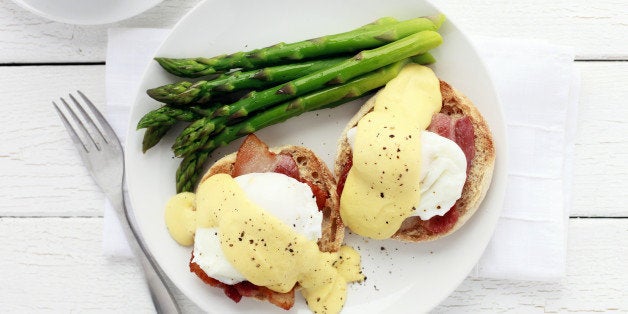
The portion sizes of foods we commonly consume are too big. Look around and just about everything is available in jumbo sizes. Soft drinks, French fries, coffee drinks, steaks, burgers, bagels and muffins have all grown in size. Indeed, many food portions are now two to five times larger than they were 50 years ago. I discuss this phenomenon known as "portion distortion" in great detail in my book The Portion Teller Plan and my research papers.
Why are large portion sizes such a problem? Large portions are particularly problematic because the more we are served, the more we eat. Eating more translates into more calories, and ultimately, many of us, gain weight. And lots of it. It is no surprise that we have an obesity epidemic in the U.S. and around the world.
An extensive review from Bond University found that we eat more if we are served more. The researchers reviewed 88 existing studies on the topic. They found that when people are given a portion twice as big, they will eat around a third more food. that is pretty significant and can translate into many more calories in the course of a day, a week, and a year.
Steven Holden, one of the Bond University authors, wrote on his blog, ..."In addition to being substantial, the effect is robust, even pernicious. Larger portions lead to greater consumption even across conditions of bad food, where the portion size is not visible, and among people who should know better."
So, the next time we go out to eat, or even eat at home, how can we not fall victim to this portion size trap?
Here are five easy tricks.
1. Choose the smallest size available.
These days, many foods come in multiple sizes. The small size is your best option, and is probably not even small. Consider the smallest Starbuck's cappuccino. It is 12 ounces and labeled "tall." It is not even called "small" ( a word often considered taboo in our oversized food culture.). Next time you have a choice on a size, order a "small" or whatever the small size may be called.
2. Steer clear of bulk sizes, at least when it comes to food.
Many of us like shopping in Costco and other warehouse stores where just about everything comes in bulk and in jumbo sizes. Bigger sizes cost less per unit (or per ounce so) they are appealing. However, try avoid them when you can. As it is often hard to resist eating a reasonable size portion. If you want to buy tissues and paper towels in bulk, no problem. But limit the cookies that come 50 to a box, or muffins that are jumbo sized and come in an eight-pack. Your waistline will be happier.
3. Mind your plate size.
The bigger the plate, the more we tend to pile on and eat. And plate sizes have increased right along with our food sizes and waistlines. Here is how you can use plate size to your advantage. Eat your salad (dressing on the side, of course) off of a larger dinner plate, and use a smaller plate for your entree. This can encourage you to eat more of a lower-calorie healthy salad and a smaller portion of your main dish, which so often consists of meat and mashed potatoes. Similarly, try using a larger bowl for your fresh berries and a smaller bowl for your breakfast cereal which most of us usually tend to over pour.
4. Eat with your stomach, not your eyes.
You know the expression, "your eyes are bigger than your stomach"? It certainly applies to how so many of us deal with our portion sizes. We pile on the food, taking more than we need, and then we are... stuffed. I suggest tuning in to your internal bodily signals and eat till you are satisfied. Wait before taking doubles or feeling the urge to finish what is on your plate. Eat slowly and put your fork down between bites.
5. Fill up on fruits and veggies.
Focus on including more healthy fresh fruits and vegetables throughout the day. Because fruits and vegetables are relatively low in calories, you can have a larger portion, and the fiber will make you feel full. This may make it easier to resist the urge to overeat on processed foods and unhealthy desserts. Try including a fruit or vegetable serving with each meal and snack.